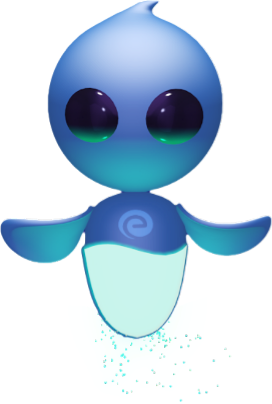IBPS PO Mains Preparation . 738526

IBPS PO Mains Preparation Guidelines
March 26, 2025
Harvest Smarter Results!
Celebrate Baisakhi with smarter learning and steady progress.
Unlock discounts on all plans and grow your way to success!

IBPS PO Mains Preparation Guidelines
March 26, 2025
IBPS Clerk Login 2025: How to Register and Apply
March 26, 2025
IBPS Clerk Prelims Mock Test 2025: Attempt Online Test Series
March 26, 2025
SSC Selection Post Study Plan 2025 – Check Preparation Strategy
March 26, 2025
SSC Selection Post Exam Centres 2025: State-wise List
March 26, 2025
SSC MTS Sample Papers: Download PDFs
March 25, 2025
IBPS RRB Recruitment Notification 2025 For 5000 + Vacancies | Apply online @ ibps.sifyitest.com
March 18, 2025
SBI PO Mains General Awareness 2025: Check Details
March 15, 2025
SSC GD Important Dates 2025: Check GD Constable Exam Date
March 13, 2025
SSC Selection Post Exam Analysis 2025: Check Difficulty Level
March 13, 2025
Disaster Management: What is a disaster? Disasters are severe disturbances to a community’s functioning that surpass the community’s ability to cope using its own resources. Natural, man-made, and technological hazards, as well as various elements that influence a community’s exposure and vulnerability, can all contribute to disasters. Earthquakes, floods, and other natural disasters are instances of disasters.
Disasters strike when a community is inadequately resourced or organised to endure the impact, and whose population is vulnerable due to poverty, exclusion, or other forms of socioeconomic disadvantage. We can help communities prepare for disasters, lower their risks, and become more resilient by assisting them in being more prepared. On this page, let us learn about disaster management in detail.
In the face of the climate problem, these efforts are becoming increasingly important. Every year, the effects of global warming kill people and destroy lives and livelihoods, and they will only grow worse unless fast and decisive action is taken.

Disasters can be broadly categorised into two:
Disasters can be further classified into the following categories:
Water and Climate Disasters include floods, hail storms, cloudbursts, cyclones, heat waves, cold waves, droughts, and hurricanes, among others. With climate change, these kinds of disasters is becoming more common.
Geological disasters are those that occur as a result of the earth’s topography and geology. Examples include landslides, earthquakes, volcanic eruptions, and tornadoes.
Biological disasters are those that are brought on by biological agents. Biological disasters include viral outbreaks, pest attacks, cow epidemics, and locust plagues. This category includes the recent Coronavirus epidemic.
Chemical and industrial mishaps, mine shaft fires, oil spills, and other such incidents fall under industrial disasters
Nuclear disasters include nuclear reactor meltdowns and radiation sickness.
Urban and forest fires, oil spills, and the collapse of massive architectural structures are all examples of man-made disasters.
Disaster Management is defined under the Disaster Management Act of 2005 as an integrated process of planning, organising, coordinating, and implementing procedures that are required for:
Disaster preparedness refers to the steps taken to prepare for and mitigate the effects of natural and man-made disasters. This is accomplished by research and planning in order to try to foresee disaster-prone areas or regions and, where feasible, prevent disasters from occurring and/or decrease the impact of catastrophes on vulnerable populations so that they can deal properly.
Disaster preparedness actions combined with risk reduction measures can help to prevent disasters and save as many lives and livelihoods as possible during a disaster, allowing the afflicted community to return to normalcy quickly.
Minimising loss of life and property damage by facilitating effective disaster response and recovery services when they are needed is one of the key elements for recovery after a disaster. The most effective strategy to lessen the impact of disasters is to be prepared. Disaster management should place a strong premium on community-based readiness and management.
Disasters are severe disturbances to a community’s functioning that surpass its ability to cope. Natural, man-made, and technological hazards can all contribute to disasters. Water and Climate Disasters include floods, hail storms, cloudbursts, cyclones, heat waves, cold waves, droughts, and hurricanes. Industrial disasters include mine shaft fires, oil spills, and other such incidents.
Every year, the effects of global warming kill people and destroy lives and livelihoods. We can help communities prepare for disasters, lower their risks, and become more resilient.
Students might be having many questions regarding Disaster Management. Here are a few commonly asked questions and answers.
Q.1. What is a Disaster?
Ans: Disasters are severe disturbances to a community’s functioning that surpass the community’s ability to cope using its own resources.
Q.2. What is a Biological Disaster?
Ans: Biological disasters are those that are brought on by biological agents. Biological disasters include viral outbreaks, pest attacks, cow epidemics, and locust plagues.
Q.3. What is a geological disaster?
Ans: Geological disasters are those that occur as a result of the earth’s topography and geology. Examples include landslides, earthquakes, volcanic eruptions, and tornadoes
Q.4. What are the two types of disasters?
Ans: Natural and man-made are the two types of disasters
Q.5. What is disaster management?
Ans: Disaster management is in reference to the steps taken to prepare for and mitigate the effects of natural and man-made disasters.
We hope this information about Disaster Management has been helpful. If you have any doubts, comment in the section below, and we will get back to you.
IBPS PO Mains Preparation . 738526
IBPS Clerk Login 2025: Every year, the Institute of Banking Personnel Selection (IBPS) conducts the IBPS Clerk exam to fill clerical positions in 11 public...
IBPS Clerk Prelims Mock Test 2025: Are you one of the thousands of candidates who have applied to IBPS Clerk Recruitment and are awaiting the...
SSC Selection Post Study Plan 2025: The Staff Selection Commission (SSC) conducts the SSC Selection Post exam for various levels. SSC conducts separate online exams...
SSC Selection Post Exam Centres 2025: The Staff Selection Commission conducted the SSC Selection Post Phase 13 exam as per the official dates mentioned in...
IBPS RRB Recruitment for the year 2025 is yet to be announced. The IBPS RRB Vacancy 2025 details for the recruitment of RRB Office Assistant...
SBI PO Mains General Awareness: The SBI PO Mains exam was administered by State Bank of India today, January 2025. For this exam, which had...
SSC GD Constable Important Dates 2025-2026: The Staff Selection Commission (SSC) conducts the SSC GD Constable exam to hire talented aspirants. The Commission will conduct...
SSC Selection Post Exam Analysis: The Staff Selection Committee (SSC) released the SSC Selection Post answer key on after conducting exam , 2025, after conducting...
SSC CPO Registration 2025: SSC CPO Recruitment 2025: According to the latest news, the Staff Selection Commission (SSC) released the official notification for the SSC...
Are you looking for officer and assistant-level positions in various Central Government departments? Then you must know the SSC CGL recruitment exam is one of...
Best Courses After 12th in 2025: After completing the 12th grade, choosing the right course is one of the most important decisions you will make...
CBSE Class 12 Important Dates: The CBSE Class 12 board exams are an important milestone for students as they mark the culmination of their secondary...
SSC Stenographer Study Plan 2025: The Staff Selection Commission (SSC) has started the registration process for the SSC Stenographer. Candidates must start preparing for the...
CBSE Class 10 Exam Day Guidelines: The Central Board of Secondary Education (CBSE) will begin the Class 10th and 12th board exams on February ,...
Thermodynamics is the study of how heat or any other form of energy flows into and out of a system as it goes through a...
SBI PO 2025 Preparation Tips: Preparing for the SBI PO 2025 requires more than just dedication; it calls for a winning combination of determination, perseverance,...
SBI PO Mains Books 2025 - The SBI PO Mains exam will be conducted in April/May 2025. This job is one of the most prestigious...
IBPS RRB Clerk Prelims Mock Test 2025: The IBPS RRB Office Assistant Prelims exam consists of 80 multiple-choice questions that must be solved in 45...
NEET Rules and Regulations 2025: NTA released the NEET 2025 dress code and rules and regulations along with the NEET notification 2025. NEET 2025 will be...
NEET 2025 Important Topics: Over 20 lakh candidates participate in the NEET exam each year; Thus, this exam is bound to be competitive and demanding....
IIT JEE Advanced Previous Year Papers PDF Download: Joint Entrance Examination (JEE) Advanced, also famous as IIT JEE, is one of India's most popular engineering entrance...
CUET Merit List 2025: NTA will conduct the CUET exam probably in May 2025. Once the exam gets over, the official authorities will release the...
Achieve Your Best With 3D Learning, Book Practice, Tests & Doubt Resolutions at Embibe
Free Sign Up
